
Kannada, formerly also known as Canarese, is a classical Dravidian language spoken predominantly by the people of Karnataka in southwestern India, with minorities in all neighbouring states. It has around 44 million native speakers, and is additionally a second or third language for around 15 million non-native speakers in Karnataka. The official and administrative language of the state of Karnataka, it also has scheduled status in India and has been included among the country's designated classical languages.
The Kodava is a Dravidian language spoken in Kodagu district (Coorg) in Southern Karnataka, India. It is an endangered language. The term Kodava has two related usages. Firstly, it is the name of the Kodava language and culture followed by a number of communities from Kodagu. Secondly, within the Kodava-speaking communities and region (Kodagu), it is a demonym for the dominant Kodava people. Hence, the Kodava language is not only the primary language of the Kodavas but also of many other castes and tribes in Kodagu. The language has two dialects: Mendele and Kiggat.

Kodagu district is an administrative district in the Karnataka state of India. Before 1956, it was an administratively separate Coorg State at which point it was merged into an enlarged Mysore State.
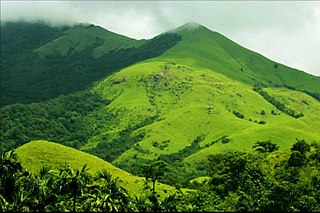
Madikeri is city and headquarters of Kodagu district in the Karnataka state of India. It is recognised as one of the world's eight "hottest hotspots" of biological diversity and also one of UNESCO World Heritage Sites. The city is ranked 1st in India for having cleanest air and best AQI in 2024.

The Kodavas also called Coorgs are an endogamous Dravidian ethnolinguistic group from the region of Kodagu in the southern Indian state of Karnataka, who natively speak the Kodava language. Kodavas worship ancestors, nature, and weapons such as swords, bows, arrows, and later guns.

Tamil copper-plate inscriptions are copper-plate records of grants of villages, plots of cultivable lands or other privileges to private individuals or public institutions by the members of the various South Indian royal dynasties. The study of these inscriptions has been especially important in reconstructing the history of Tamil Nadu. The grants range in date from the 10th century C.E. to the mid-19th century C.E. A large number of them belong to the pandyas, the Cholas. These plates are valuable epigraphically as they give us an insight into the social conditions of medieval South India; they also help us fill chronological gaps in the connected history of the ruling dynasties. For example, the Leyden grant of Parantaka Chola and those of Parakesari Uttama Chola are among the most important, although the most useful part, i.e., the genealogical section, of the latter's plates seems to have been lost
Vatteluttu or Vattezhuthu was an alphasyllabic writing system of south India and Sri Lanka used for writing the Tamil and Malayalam languages. This script is the sister of the Pallava script which was once in development in Southeast Asia.

The Pallava script, or Pallava Grantha, is a style of Grantha script named after the Pallava dynasty of Southern India (Tamilakam) and is attested to since the 4th century CE. In India, the Pallava script evolved from Tamil-Brahmi. The Grantha script originated from the Pallava script. Pallava also spread to Southeast Asia and evolved into scripts such as Balinese, Baybayin, Javanese, Kawi, Khmer, Lanna, Lao, Mon–Burmese, New Tai Lue, Sundanese, and Thai. This script is the sister of the Vatteluttu script which was used to write Tamil and Malayalam in the past.

The earliest deciphered epigraphy found in the Indian subcontinent are the Edicts of Ashoka of the 3rd century BCE, in the Brahmi script.
Epigraphia Carnatica is a set of books on epigraphy of the Old Mysore region of India, compiled by Benjamin Lewis Rice, the Director of the Mysore Archaeological Department. Over a period of about ten years between 1894 and 1905, Rice published the books in a set of twelve volumes. The books contain the study of about 9,000 inscriptions from lithic surfaces and copper plates, which were found in the region. Apart from the original inscription, an English translation and a Roman transliteration are also provided.
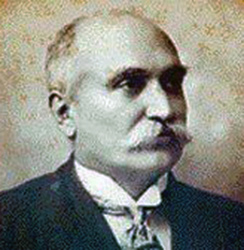
Benjamin Lewis Rice, popularly known as B. L. Rice, was a British historian, archaeologist and educationist. He is known for his pioneering work in deciphering inscriptions, especially in Kannada, and in Sanskrit inscriptions in the Kingdom of Mysore and is eulogized as Shasanapitamaha or Purathathva Pitamaha Rice's researches were published as the voluminous Epigraphia Carnatica which contains translations of about 9000 inscriptions he found in the Old Mysore area. Rice also compiled the much acclaimed Mysore Gazetteer which still remains the primary source of information for most places in Mysore and neighbouring Coorg. Rice served with distinction in the Mysore civil service and as first Director of the Mysore State Archaeology Department.
Karnataka is a state in the southern part of India. It was created on 1 November 1956, with the passing of the States Reorganisation Act. Karnataka is bordered by the Arabian Sea to the west, Goa to the north-west, Maharashtra to the north, Telangana and Andhra Pradesh to the east, Tamil Nadu to the south-east, and Kerala to the south-west. The state covers an area of 74,122 sq mi (191,976 km2), or 5.83% of the total geographical area of India. It comprises 30 districts. Kannada is the official language of Karnataka and as per the 2011 census is the mother tongue of 66.5% of the population. Various ethnic groups with origins in other parts of India have unique customs and use languages at home other than Kannada, adding to the cultural diversity of the state. Significant linguistic minorities in the state in 2011 included speakers of Urdu (10.8%), Telugu (5.8%), Tamil (3.5%), Marathi (3.4%), Hindi (3.2%), Tulu (2.6%), Konkani (1.3%) and Malayalam (1.3%).
Nadikerianda Chinnappa (1875–1931) was an Indian compiler, poet, translator, army man, police officer, cricket player, singer and philanthropist from Kodagu.
There are nearly a thousand inscriptions in Tamil in the Southern Karnataka districts of Bangalore, Mysore, Kolar and Mandya in India. Nearly one third of these inscriptions are found in the Kolar District. Of all the inscriptions collected and published in the Epigraphia Carnatica Vol X for Kolar district, a fourth are in Tamil. The Tamil inscriptions start to appear around 1000 AD, after the conquest of the region by the Chola dynasty king Rajaraja I. Even after the Cholas left the area, the Hoysala and later the Vijaynagar kingdoms continued to use Tamil in the inscriptions.
Kalyatanda Ponnappa was a 17th-century warrior of Kodagu (Coorg). Since he was deified after his death, the people of Kodagu consider him to be a god. He is also known as Kaliat-Achchappa or Kaliat Ajjappa.
Nitin Kushalappa is an Indian author of books and articles.

Domlur is a locality in the eastern part of Bengaluru city in India. Domlur is a historic places as indicated in the 18 inscriptions spanning the period 1200-1440CE found there. Of these, 16 inscriptions are at the Chokkanathaswamy Temple dedicated to the deity Chokkanathaswamy or the Chokka Perumal [the Hindu God Vishnu]. Of these eleven inscriptions are from the period 1200-1440 CE and have been documented earlier in Epigraphia Carnatica, Vol 9, these are mostly donatory inscriptions for the deity Chokkanathaswamy and for the Someshwara temple (non-existent).
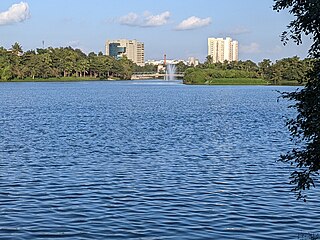
Allalasandra is a historic locality in North Bengaluru adjoining the Gandhi Krishi Vigyan Kendra (GKVK) campus on Bellary road. Allasandra's historicity tracing back to about 500 years can be attested from the Rachur Narasappiah's Donation Inscription mentions the donation of the entire village of Allalasandra to the Allalanatha temple at Jakkur.
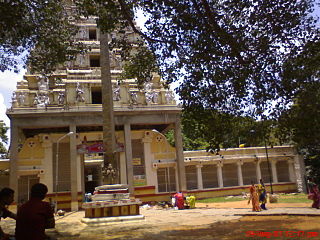
The Basavanagudi Inscriptions are a set of three Kannada and one Tamil inscriptions that can be found in the locality of Basavanagudi. Of the four, three Kannada inscriptions are physically present and the fourth Tamil inscription's physical status remains unknown. The available Kannada inscriptions can be found in Bugle rock park and Dodda Basavana Gudi or Big bull temple. Two inscriptions found in the vicinity of Dodda Basavana Gudi or Big bull temple, both describe the Vrishabhavati river's origin as coming from the feet of the Basava idol in the temple's sanctum and flowing westwards thereon as Paschimavahini. The two inscriptions can be found: one on the pedestal of the Basava deity in the sanctum and the other on a boulder in the shrubbery surrounding the temple. Two more inscriptions that are published, one is a one line Tamil inscription in Grantha script published in Epigraphia Carnatica and is about possible donatory inscription to the Chokkanathaswamy Temple in Domlur, a locality in Bengaluru, its physical status is not known at present and the other is a one line Kannada inscription in the Kannada script published in Itihasa Darshana Journal and is present on a boulder in the Bugle rock park in Basavanagudi is about one Deevatige Soma.
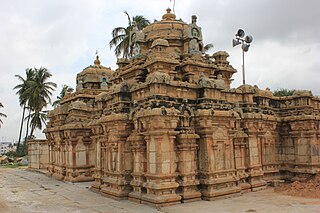
Begur is a locality in Bengaluru South which stands as a testament to ancient Bengaluru, with historical evidence dating back to c. 6th century CE. It was formerly known as Bempur, Veppur, and Behur, and served as a significant administrative center, playing a vital role in the evolution of Bengaluru to a modern global metropolis.















